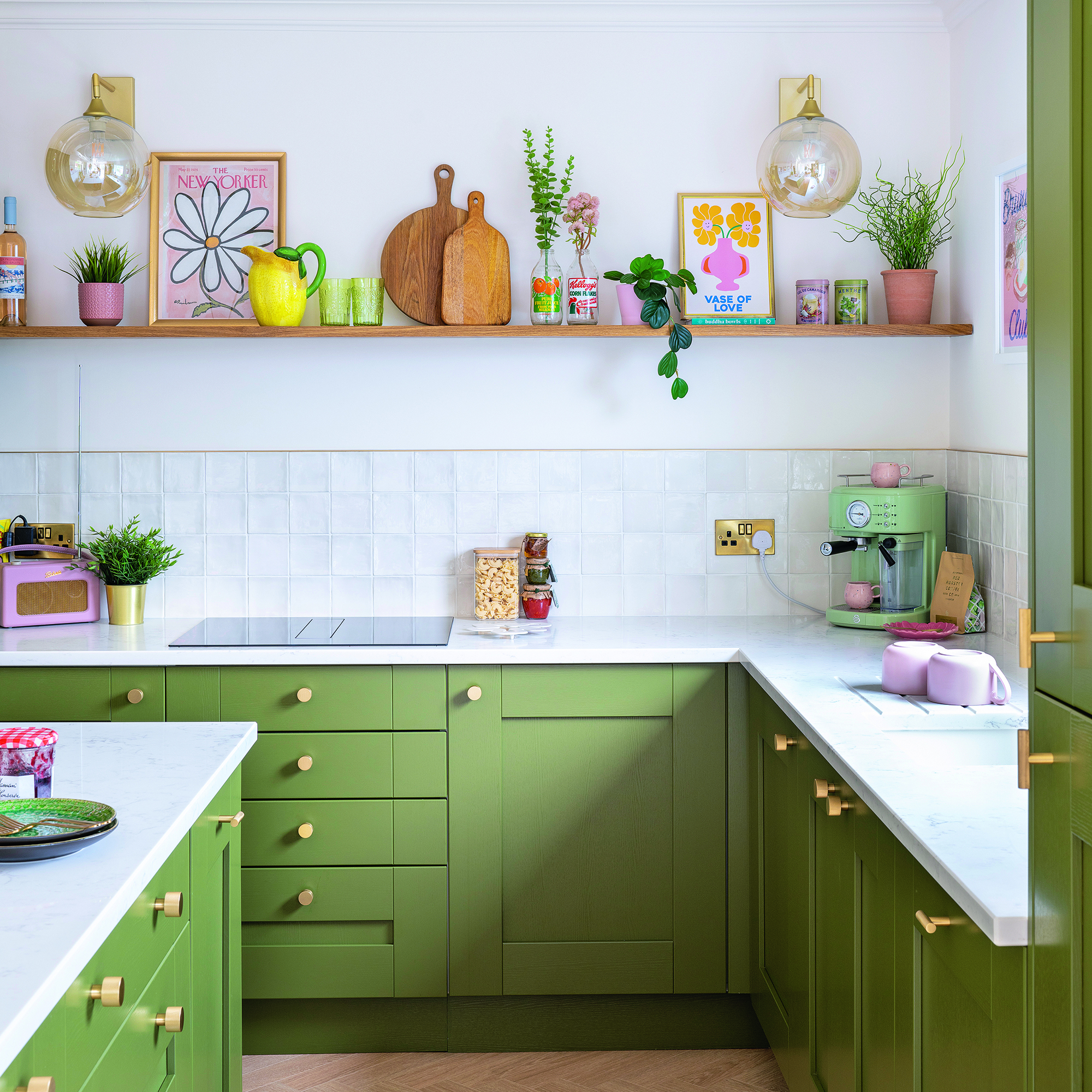
Most might be hesitant to install open shelving as it can risk your kitchen looking cluttered. Add too many items to the shelf or organise it badly and it can completely throw off the aesthetic. But style it well and open shelving can make a kitchen look sophisticated and intentional.
In small kitchens, open shelving can make the space feel more open and airy. Replacing units with single-open shelves can also increase storage opportunities without restrictions. You won’t have to struggle to reach pantry items that are stacked at the back of the cupboard or tucked around the corner. Open shelves allow your most-used items to be easily accessible.
In larger kitchens, where you don’t need the storage space, open kitchen shelving ideas have their benefits too. Rather than organising your go-to kitchen essentials, you can decorate open shelves with ‘special’ crockery and attractive glassware for a curated look.
To make sure you style your open shelves right, we’ve spoken to the experts for their top tips. Some say choosing open shelving in a similar material or colour as your base cabinets or countertops is key whereas others believe what you put on your shelves is essential to an eye-catching display.
How to style open shelving in a kitchen
What they do agree on, however, is that open-shelving is the best kitchen idea to refresh your space, whether you’re undergoing a kitchen renovation or want to make an easy change to your current set-up. Open shelves can be introduced into any kitchen design. You can switch out all wall cabinets for open shelving or add one to an empty wall.
1. Start with the shelf itself
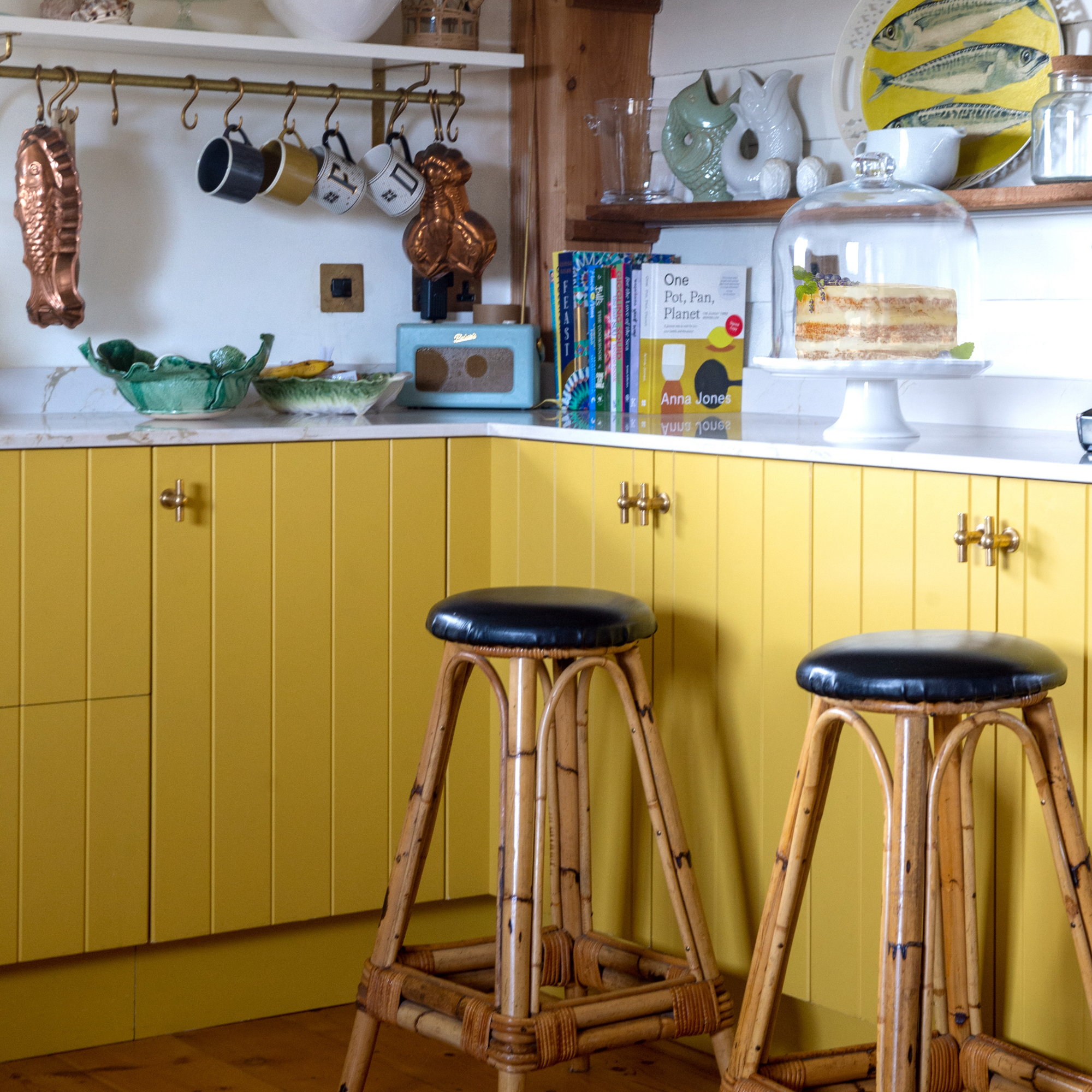
Before you get underway with curation and presentation, you shouldn't forget about the shelf itself.
Cox & Cox’s head of photography and film, Danielle LeVaillant says the key to a well-styled shelf is choosing shelves that suit your kitchen style and needs. ‘Look for shelves that have an interesting feature or design. Wire and metal shelves add an industrial dimension to kitchens, and choosing one with a rail for hooks to hang pots and pans, utensils or fancy tea towels will allow for extra storage.’
2. Less is more

When styling open shelving in a kitchen it can be quite overwhelming. From pantry goods and condiments to kitchen utensils and cookware, what should you put on open shelves? Melissa Klink, interiors and kitchen expert at Harvey Jones believes less is more. For kitchens that don’t necessarily need the shelf for storage, ‘you should choose a combination of your favourite pieces and everyday must-haves’.
Al Bruce, founder of Olive & Barr agrees, ‘rather than displaying all your glassware and crockery, curate your best-looking items that can add interest as well as depth and colour. Not only will the addition of open shelving make your space feel lighter and brighter, but you’ll also have more opportunities to bring your personality to the forefront.’
3. Balance function and style
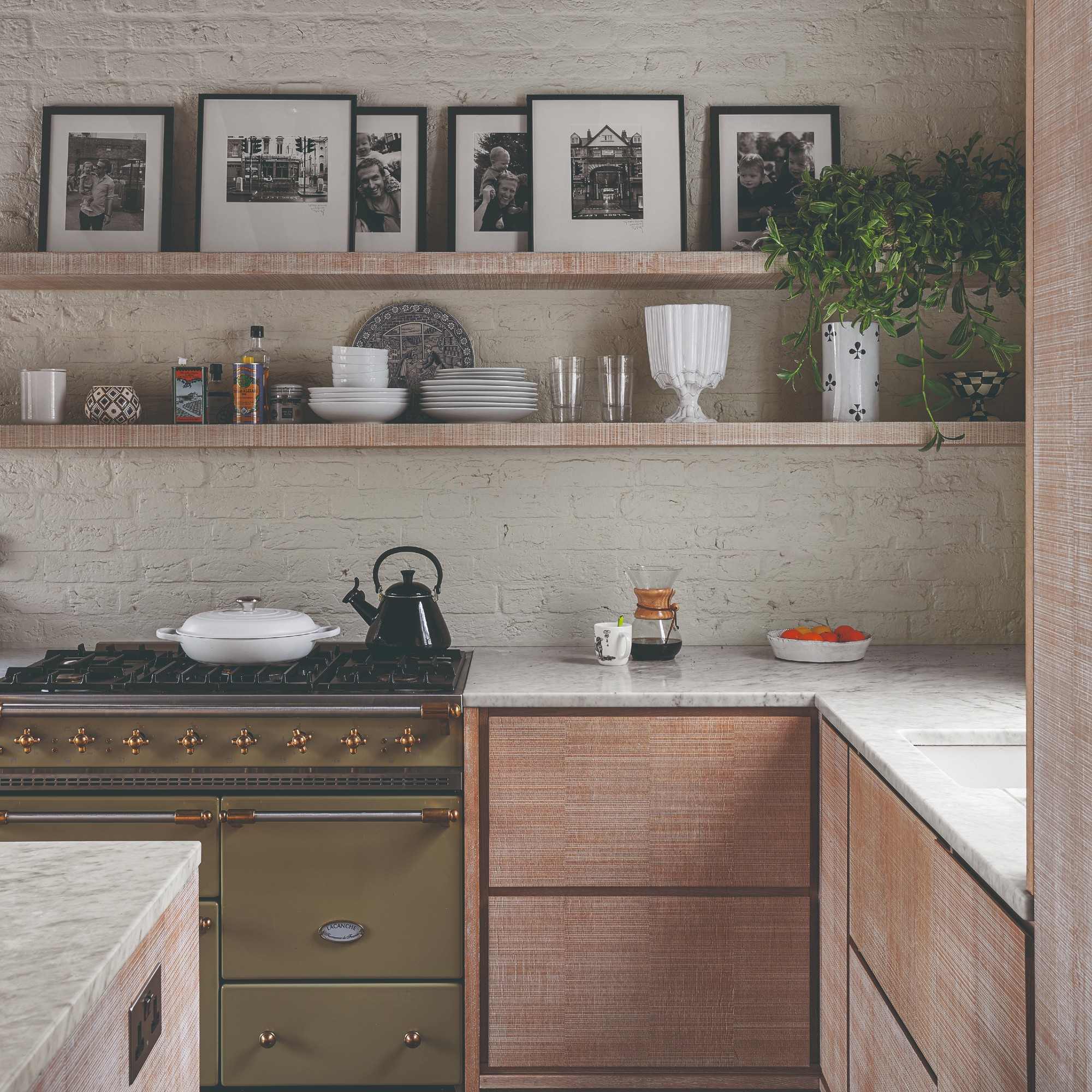
But don’t forget about function. While open-shelving is the perfect opportunity to show off your best crockery sets and favourite Le Creuset cookware, the main advantage of open-shelving is accessibility.
Open shelves should look beautiful, but also be practical. Senior interior designer at Vesta, Ashley Baker advises to ‘cut down your collection before you go and display them on your shelves. You should only display items you use regularly like bowls and glasses.’ There’s not much point in putting your steak-only grill pan above the hob if you only reach for it once every so often.
4. Keep categories grouped
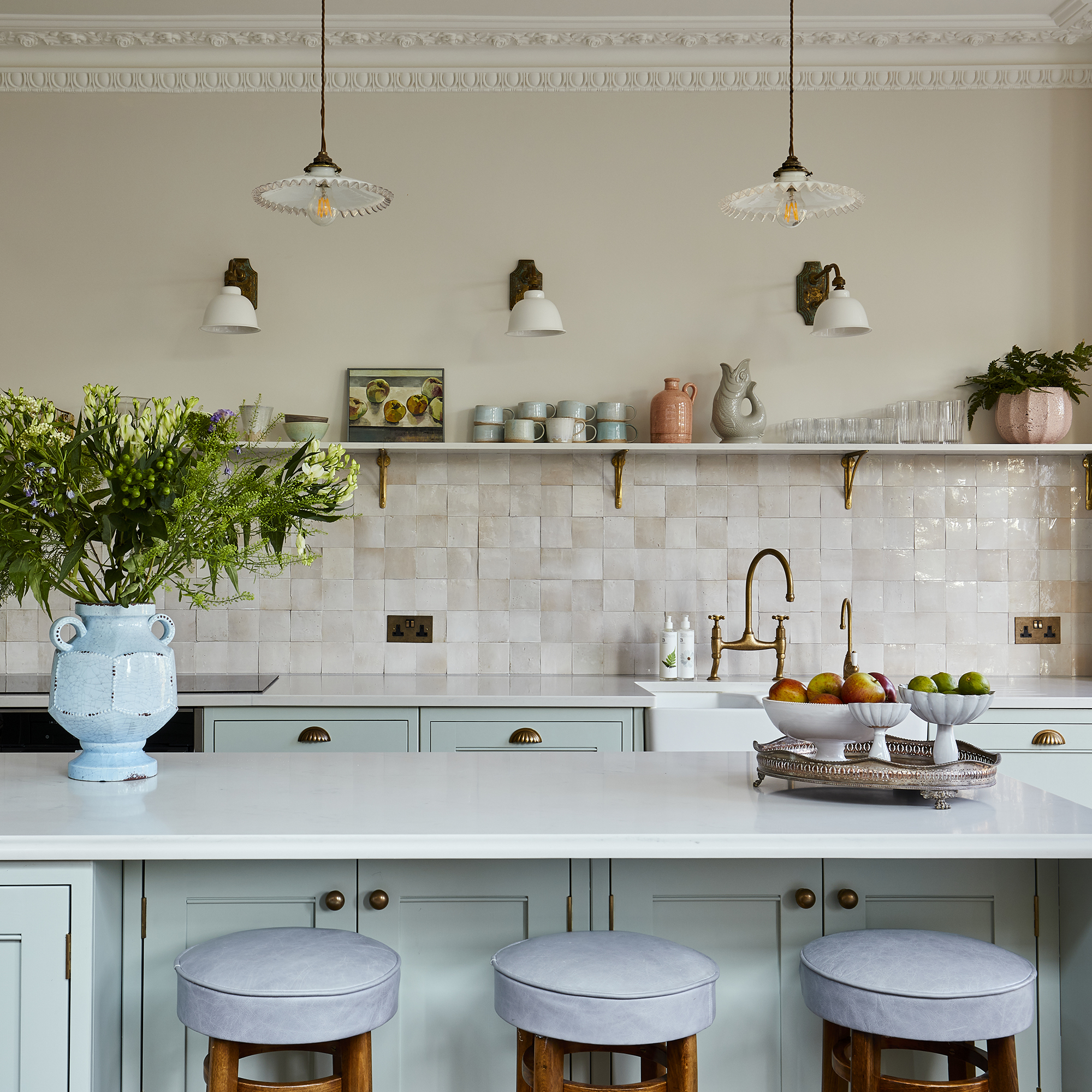
If you’ve decided to go for multiple open shelves, perhaps in replacement of cabinetry, it’s important to keep your shelving organised. It can easily get out of hand if you have all your kitchen items on display. To maintain a clutter-free kitchen space you should group by category.
Keep all of your plates, bowls and other tableware on one shelf, and your pots and pans on another. It’s also a great idea to dedicate one shelf to your herbs, spices and condiments. A stylish spice rack would add aesthetic appeal and allow for an efficient cooking experience.
5. Decanter goods into glass jars
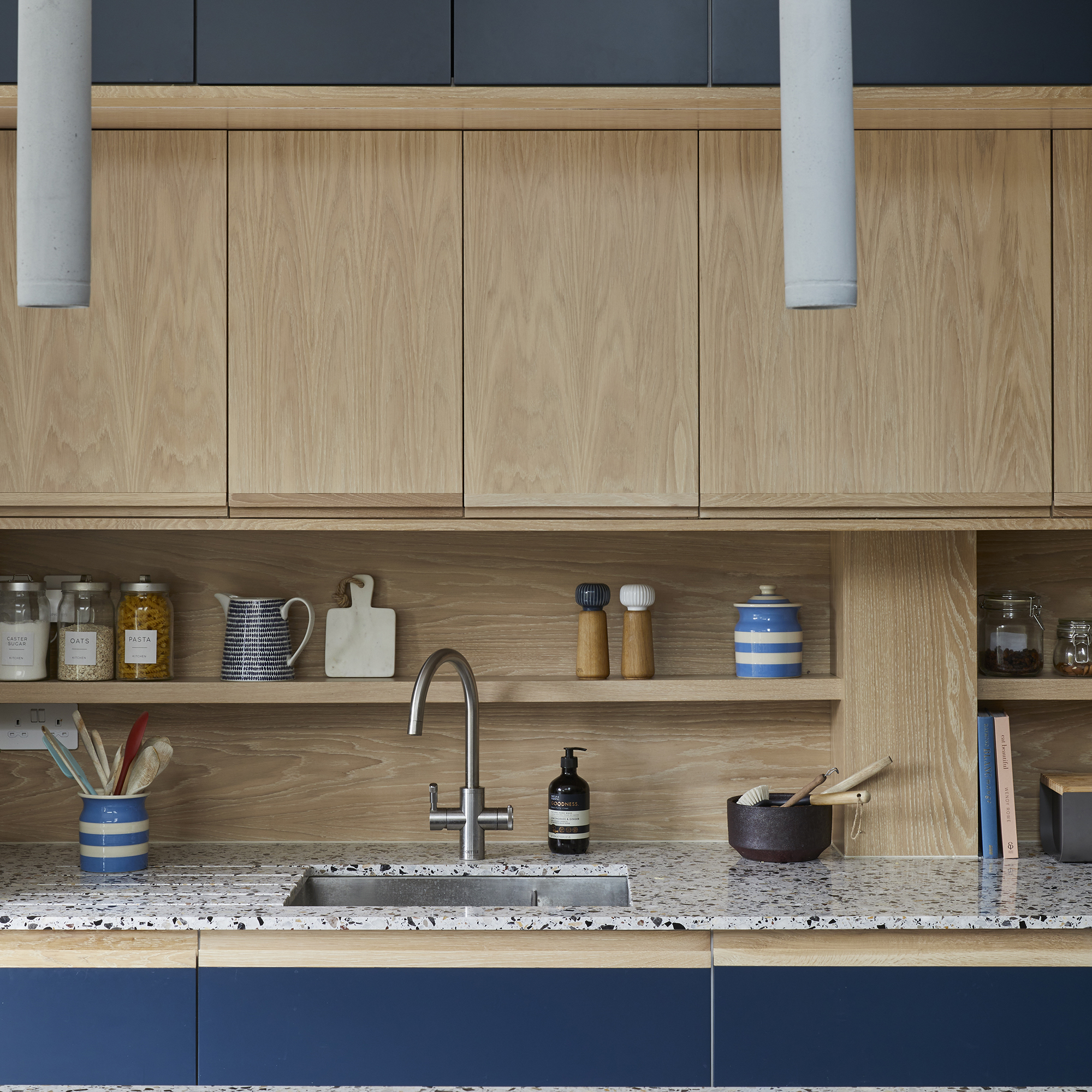
Open shelves are the perfect kitchen storage idea, but when it comes to pantry goods, packaging isn't always that pretty and you might not want it on display. For a uniform and aesthetically pleasing shelf, Al Bruce, founder of Olive & Barr suggests ‘decantering dried food items into mason jars and using jute or woven baskets to hide any possible clutter. From pasta to flour, you can fill them with anything you like and display them like art.’
You can also choose jars that complement your kitchen's overall style. There are clear glass jars, or ones with metal lids, containers with calligraphed labels and others with decorative patterns in different colours.
6. Consider colour

When placing items on shelves, ensure the colours are cohesive to create a harmonious and visually appealing display. Janine Lowe, interior designer and feng shui consultant, advises you should ‘only use a couple of colours per shelf to prevent the shelves looking cluttered.’
Darren Watts, showroom development and design director at Wren Kitchens also suggests adding kitchen tiles behind your open shelves for some extra appeal.
‘You can create a colourful display with subway tiles in between each shelf. You could top for full colour or create a striped effect by choosing a different tile in between each shelf. Alternatively, you could tile your kitchen walls halfway up, then place an open wall shelving unit above to neatly finish the look,' he says.
7. Incorporate decorative elements
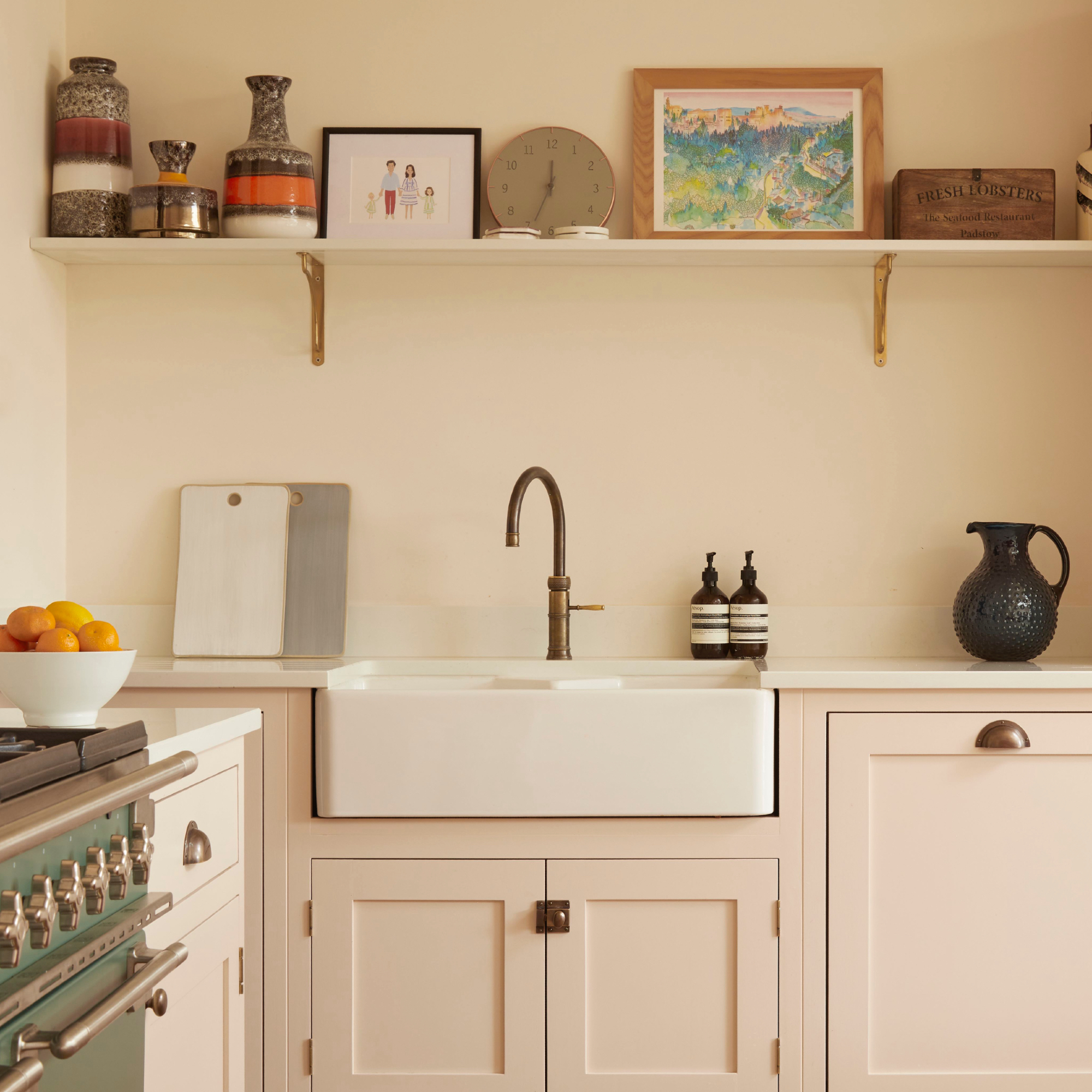
Open shelves in the kitchen don’t have to just contain kitchen items. Ashley Baker suggests ‘interspersing function items with decorative objects like artwork and plants.
Danielle LeVaillant also thinks open shelving provides an opportunity to make attractive displays. As well as showcasing ‘pretty vases and quirky cookware’, open shelves can help evoke a certain kitchen style. ‘Keep the culinary theme strong with vintage inspired signage for character. Choose a quirky pot to group together utensils and on larger shelves add storage baskets to tidy away smaller pieces and keep the look styled rather than chaotic.’
8. Embrace the rule of three

Styling a shelf might look as easy as arranging a few items in a way that looks effortlessly put together, but there is an art to it. The rule of three is a simple method for achieving a curated look, without much thought.
Senior interior designer at Vesta, Ashley Baker explains, ‘You should style items in odd numbers for a more sophisticated look. This creates visual triangles that are pleasing to the eye.’
FAQs
Is open shelving in a kitchen still in style?
Open shelving is a design trend that has been around for ages, dating all the way back to the 18th century. That being said, it’s become increasingly popular over the last few years and is a modern kitchen idea that works with most contemporary homes.
As Richard Joseph, CEO & Co-founder of Joseph Joseph argues, ’ Open shelving offers both a practical and aesthetic appeal. In addition to creating a sense of openness and spaciousness in a kitchen, open shelves are a clean design trick to avoid the need for cabinetry. By foregoing closed cabinets, open shelving allows for easy access to essentials, while providing a great opportunity to showcase decorative items - adding personality to the kitchen. Whether it’s a much-loved set of pans, stylish dinnerware or your favourite cookbooks, open shelves give homeowners a space to reflect individual style.’
How do you make open shelves look less cluttered?
The biggest risk with open shelving is your kitchen could look cluttered. Richard Joseph, CEO & Co-founder of Joseph Joseph, explains ‘aesthetically pleasing open shelving requires a commitment to tidiness, along with thoughtful consideration to what is on display. To achieve a minimalist look, it is important to keep things paired back by being selective with what you display. Otherwise you may overcrowd your shelf and make it look chaotic.’
As mentioned above, using matching containers is a great way at streamlining your shelf. ‘Decant pantry staples, everyday condiments and spices into matching containers to create a cohesive display. Group similar items by shape, colour and size, and position ingredients or crockery that you use on lower shelves that are easy to reach.’
Richard also advises to ‘use under shelf storage to utilise unused space beneath the shelf. A countertop is a better place to keep your coffee pods for example.’ Melissa Klink, interiors and kitchen expert at Harvey Jones’ top tip is to mount rails under floating shelves. ’Perfect for hanging your favourite utensils, adding rails will make your go-to kitchen essentials easy to access and free up shelf space needed for other items.’
And don’t forget negative space. Ashley Baker says you should ‘Leave some empty space on shelves to avoid a cluttered look. This will make the items you display stand out more and look intentionally placed.’
How are you going to style open shelving in your kitchen?







